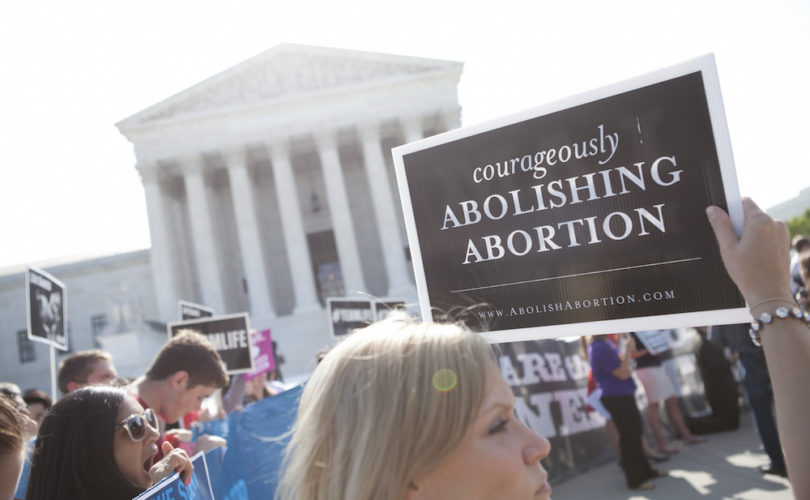March 29, 2019 (LifeSiteNews) – Planned Parenthood and its former research arm released a new report this week intended to warn their followers about rising threats to so-called “reproductive rights,” but the numbers will just as likely hearten pro-lifers by putting the scope of 2019’s pro-life legislative progress in perspective.
On Wednesday, Planned Parenthood Federation of America (PPFA) and the Guttmacher Institute released a report detailing the number of state-level bills to restrict or ban abortion that have been introduced since the beginning of 2019.
According to the abortion giant, bills to ban abortion once a fetal heartbeat can be detected (which PPAF’s press release describes only as “six-week abortion bans” and bans “before many people know they are pregnant”) have risen by 63 percent compared with last year.
Seven states have introduced “total bans on abortion” (though PPAF doesn’t specify which measures this phrasing is referring to), six have introduced bans that would only take effect after Roe v. Wade is overturned, and six states only have one facility left that commits abortions. All told, the first four months of 2019 have seen more than 250 pro-life bills across 41 states.
“It’s clear that with allies in President Trump and Supreme Court Justice Kavanaugh, anti-women’s health care politicians are advancing a strategy to ban abortion nationwide,” the press release declared, “despite the fact that support for Roe v. Wade is at its highest level on record — 73 percent of Americans say they do not want to see Roe overturned.”
While it is true that various polls show public support for Roe higher than support for abortion itself, pro-lifers argue those results are largely a byproduct of widespread ignorance about the 1973 ruling’s history and effects, sometimes compounded by misleading poll questions. Polls generally show that a majority of Americans would allow abortion in “few” or “no” circumstances, and several polls have found that majorities of Americans believe the public should be able to vote on their abortion laws, which Roe largely forbids.
Part of the energy behind the current wave of pro-life laws, most of which apply much earlier in pregnancy and contain fewer exceptions than the norm of years past, is the belief that President Donald Trump’s nominees to the U.S. Supreme Court may help form a long-awaited majority to overturn Roe v. Wade.
They hope to force such a review by banning abortion earlier than Roe’s “viability” cutoff, and the Supreme Court is more likely to consider a case of national importance if more states are enacting the same disputed laws.
Other state-level pro-life actions that have been advanced in the states this year include steps to ban abortions specifically sought because of a child’s race, sex, or disability, requiring parental notification of a minor’s attempts to abort, defunding Planned Parenthood, requiring abortionists to offer ultrasounds to pregnant women, and bans on abortion at 18 weeks.

